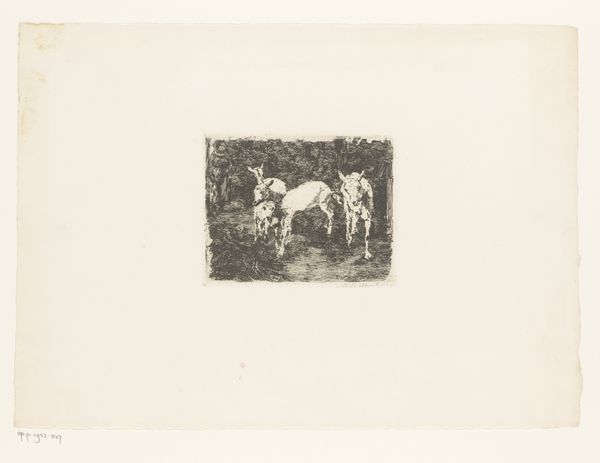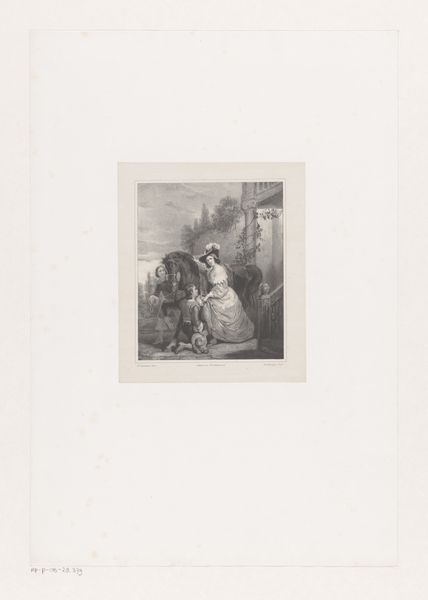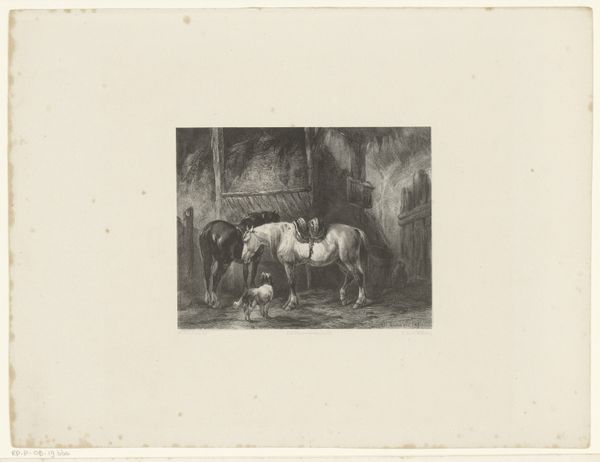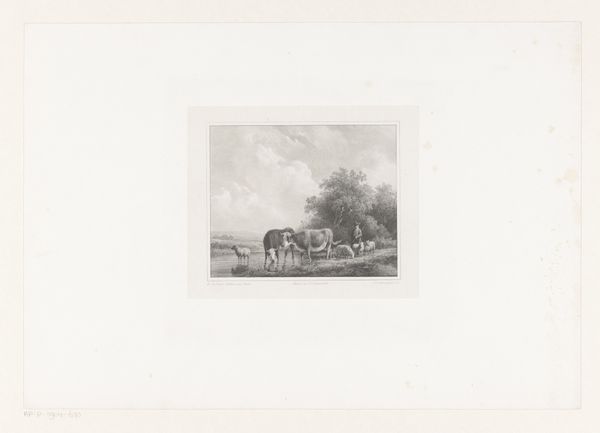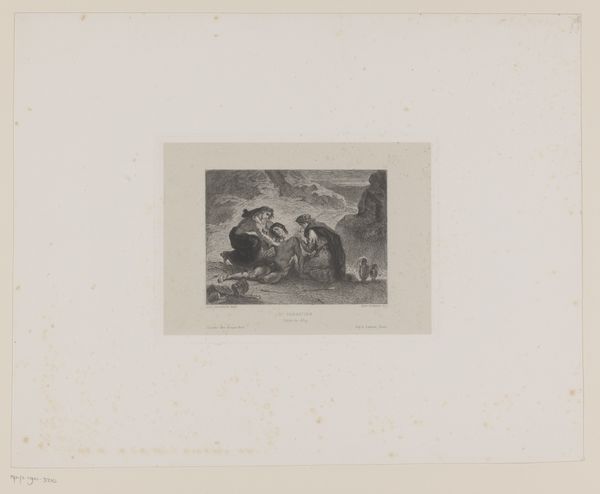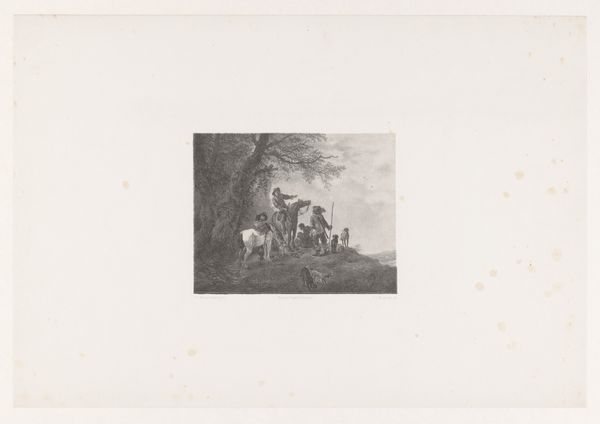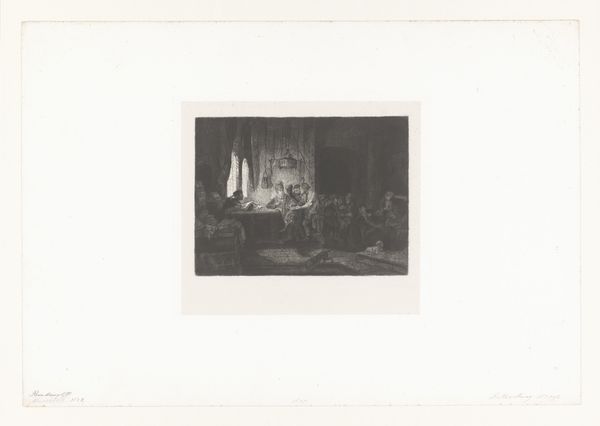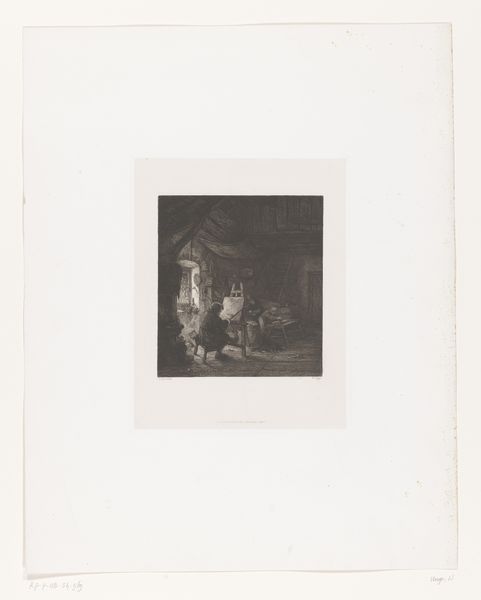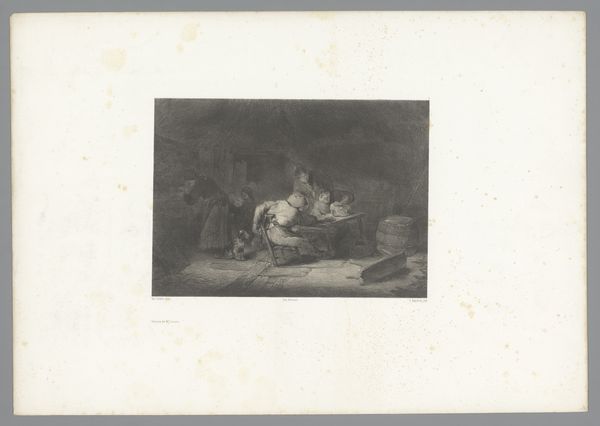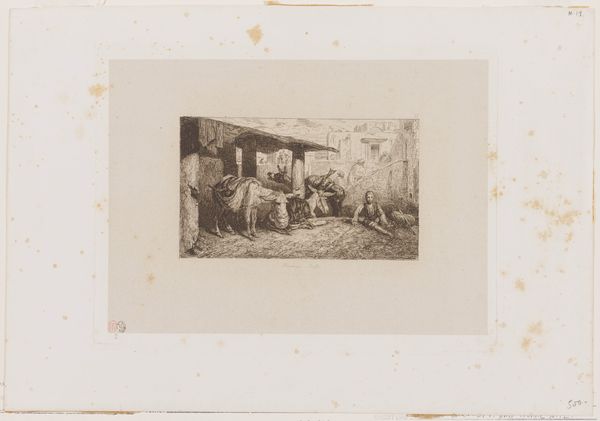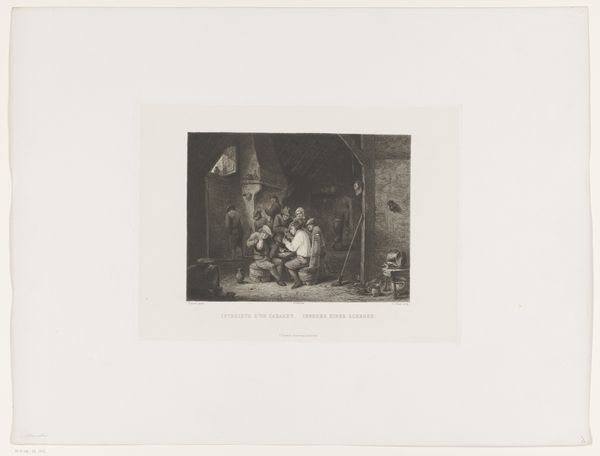
print, etching
# print
#
etching
#
landscape
#
horse
#
genre-painting
#
realism
Dimensions: height 298 mm, width 428 mm
Copyright: Rijks Museum: Open Domain
Curator: Looking at "Two Horses in a Stable," a print etched by Jan Dam Steuerwald between 1838 and 1863 and held at the Rijksmuseum, one is immediately struck by its subdued, almost melancholy tone. Editor: Yes, that's my initial impression as well. The light, or lack thereof, emphasizes a somber mood. The etching style has an inherent darkness, wouldn’t you agree? Is that light in some way symbolic? Curator: That’s a fascinating point. Let’s consider the cultural context. Horses in the 19th century were more than just animals; they were integral to agriculture, transportation, and even warfare. Within this framework, one wonders, what message does the artist want to send regarding these horses who find themselves captured indoors? Editor: It appears like they’re meant to symbolize the labor of working-class communities—their toil, their essential, yet sometimes invisible presence in Dutch society. This representation, however, might be skewed if viewed only through the prism of humans' utilitarian exploitation of them. Consider their symbolism; in dreams, they denote untamed, yet sometimes unconscious drives, urges, needs. Is this also about harnessing these emotions and impulses? Curator: I agree the animals stand to function symbolically. Yet, at its heart, Steuerwald’s print seems to touch on a silent labor that defined much of 19th-century life and whose story, from a historical perspective, demands that we engage intersectionally with the socio-economic norms, class structures, and cultural values underpinning human–animal interactions in this era. Editor: A good reading. The quietude and focus, then, allows for deeper resonance with a timeless symbol of freedom placed in circumstances beyond its control. Thank you for the lesson. Curator: Thank you. Viewing the artwork through the lens of your approach allows an examination of the artwork’s function within systems of visual meaning, lending an alternate perspective from mine.
Comments
No comments
Be the first to comment and join the conversation on the ultimate creative platform.

